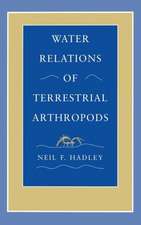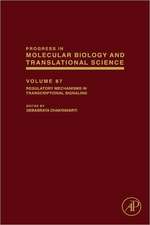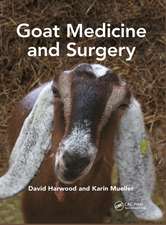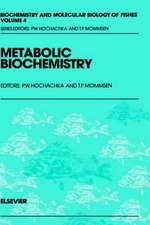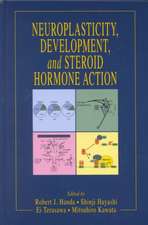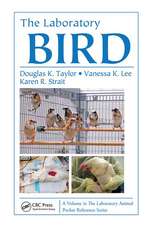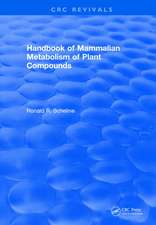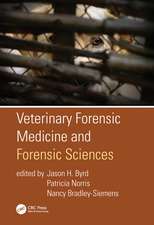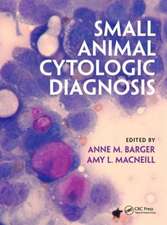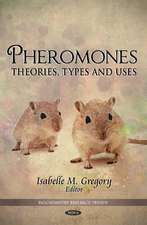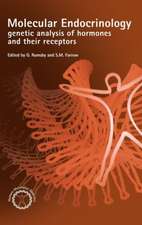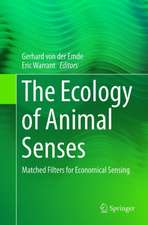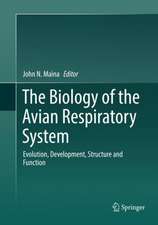Introduction to Animal Physiology
Autor Dr Ian Kayen Limba Engleză Paperback – 15 iun 1998
Preț: 488.29 lei
Nou
Puncte Express: 732
Preț estimativ în valută:
93.44€ • 98.25$ • 77.20£
93.44€ • 98.25$ • 77.20£
Carte tipărită la comandă
Livrare economică 16-30 aprilie
Preluare comenzi: 021 569.72.76
Specificații
ISBN-13: 9781859960462
ISBN-10: 1859960464
Pagini: 226
Dimensiuni: 170 x 245 x 12 mm
Greutate: 0.43 kg
Ediția:1
Editura: CRC Press
Colecția Garland Science
ISBN-10: 1859960464
Pagini: 226
Dimensiuni: 170 x 245 x 12 mm
Greutate: 0.43 kg
Ediția:1
Editura: CRC Press
Colecția Garland Science
Cuprins
Preface -- Abbreviations -- I Homeostasis: The central concept in physiology -- An introduction to animal physiology -- The body fluids of animals -- Homeostasis -- Homeostatic control systems - feedback -- Feedforward -- Non-physiological homeostatic mechanisms -- Acclimatization -- 2 Neurons and nervous systems -- Introduction -- Cellular elements of the nervous system -- How neurons work -- Synaptic transmission -- Organization of nervous systems -- 3 Receptors and effectors -- Introduction -- Sensory neurophysiology -- Classification of sensory receptors -- Sensory receptor function -- Sensory reception -- Effectors - the responses to sensory information -- Intracellular movement -- Amoeboid movement -- Muscle and movement -- Skeletal systems -- 4 Endocrine function -- Introduction -- Definition of endocrine systems -- Identification of endocrine organs -- The chemical nature of hormones -- The mechanism of hormone action -- Invertebrate endocrine systems -- Vertebrate endocrine systems -- S Ventilation and gas exchange -- Introduction -- Gases in air and water -- A comparison of air and water as respiratory media -- Gas exchange by simple diffusion across the general body surface area -- The evolution and design considerations of gas exchange organs -- Gills -- Lungs -- Tracheal systems -- Control of ventilation -- 6 Thermoregulation in animals -- The importance of temperature to animal physiology -- Classification of temperature regulation -- Heat exchange interactions between animals and the environment -- Ectotherms -- Endotherms -- Control of body temperature in endotherms -- A comparison of ectothermy with endothermy -- 7 Circulatory systems -- Functions of circulatory systems -- The composition of blood -- The heart -- Types of circulatory system -- Transport of oxygen -- Transport of carbon dioxide -- 8 Gastrointestinal function -- Introduction -- Feeding mechanisms -- The need for a gastrointestinal system -- Generalized structure and function of gastrointestinal systems -- Excretion and water absorption -- 9 Osmoregulation -- Introduction -- The principles of osmosis -- Generalized osmotic responses of animals -- The osmotic responses of animals -- 10 Excretory mechanisms -- The need for excretory organs -- Types of excretory organs -- Nitrogen excretion -- I I Reproduction -- Introduction -- Asexual reproduction -- Sexual reproduction -- Gamete production -- Fertilization -- Development and pregnancy -- Birth -- Lactation -- Maternal behavior -- Appendix. An outline classification of animals -- Glossary -- Index.
Notă biografică
Ian Kay is a Senior Lecturer in Biological Sciences in the Department of Biological Sciences at Manchester Metropolitan University, Manchester, UK.
Recenzii
"The presentation is uncluttered, with plenty of clear outline diagrams." Aslib Book Guide Vol. 64 No.5 May 1999
Descriere
Introduction to Animal Physiology provides students with a thorough, easy-to-understand introduction to the principles of animal physiology. It uses a comparative approach, with a broad spectrum of examples chosen to illustrate physiological processes from across the animal kingdom.



